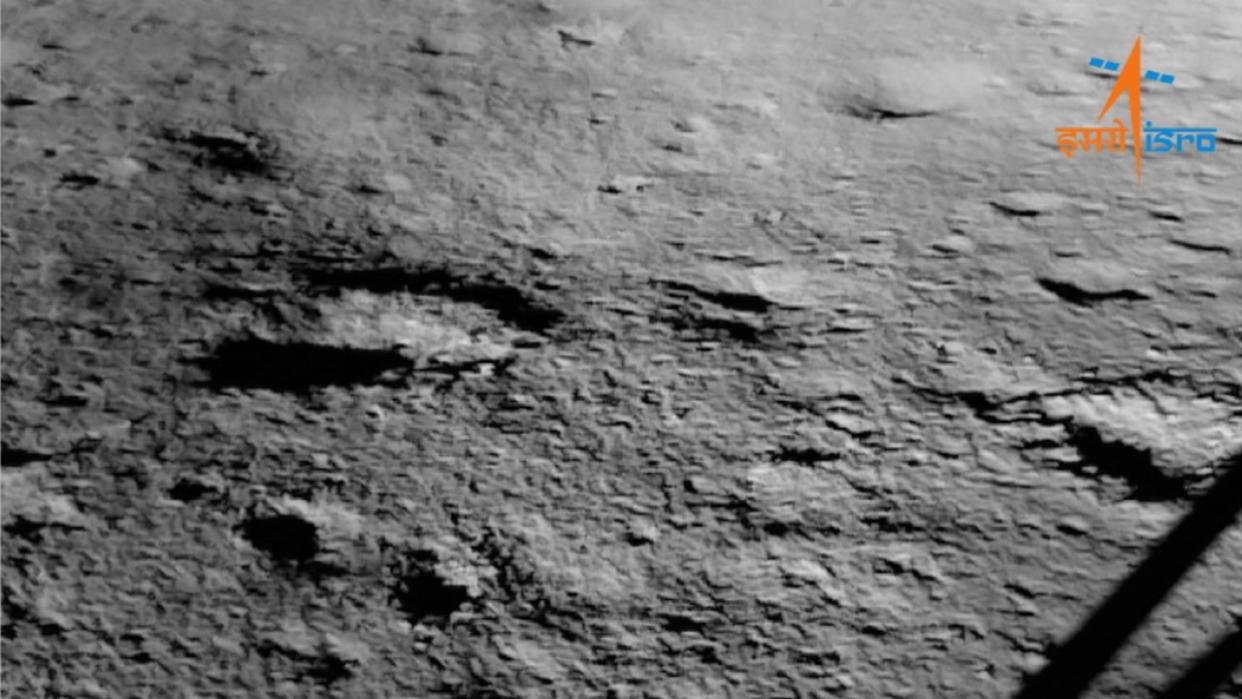India to name Chandrayaan-3's moon landing site 'Shiv Shakti Point'

- Oops!Something went wrong.Please try again later.
The spot near the moon's south pole where India's Chandrayaan-3 spacecraft made its historic landing last week will be named Shiv Shakti Point.
Indian Prime Minister Narendra Modi made the name announcement during a visit to the Indian Space Research Organisation (ISRO) in Bengaluru on Saturday (Aug. 26).
Rooted in Hindu mythology, the words "Shiv" and "Shakti" are Sanskrit for "Shiva" and "power," respectively. Shiva is a supreme god in Hinduism, and Shakti in this case refers, among other things, to the perseverance of women scientists, Modi said.
Related: Pragyan, Vikram, Vikas: How did India's Chandrayaan-3 moon mission get its names?
Hon'ble PM @narendramodi came to control centre today to congratulate each one of us He was emotional about this historic event. We are very happy to know the naming of the sites 'Tiranga' and 'Shiv Shakti': S Somanath, Chairman, @isro #Chandrayaan3 #ShivShakti #TirangaPoint pic.twitter.com/x9PPUKeMLFAugust 26, 2023
And the lunar location where Chandrayaan-2's Vikram lander crashed in 2019 will be named Tiranga Point, he added. Also a Sanskrit word, "Tiranga" translates to "three colors" and colloquially refers to India's tricolor flag. "This will be an inspiration for every effort made by India," said Modi. "It will remind us that any failure is not final."
These names are still informal, as they have not yet been approved by the International Astronomical Union (IAU), a Paris-based authority that bestows official names upon celestial bodies and their features. It was not immediately clear whether ISRO had already submitted the announced names to the IAU.
RELATED STORIES:
— What's next for India's Chandrayaan-3 mission on the moon?
— Why Chandrayaan-3 landed near the moon's south pole — and why everyone else wants to get there too
— Watch Chandrayaan-3's Pragyan rover take its '1st steps' on the moon (video)
Meanwhile, the robotic lander and rover duo that make up the Chandrayaan-3 surface mission have been making the most of their planned two-week lifespan on the moon.
The lander Vikram has operated an onboard payload called Chandra's Surface Thermophysical Experiment (or ChaSTE) to measure the temperature of the lunar soil at different depths, which is the first time such an experiment has been performed on our celestial neighbor.
ISRO also shared on X (formerly Twitter) that the rover Pragyan, which has been exploring its new home, had been rerouted after it came across a striking but potentially deadly crater.

